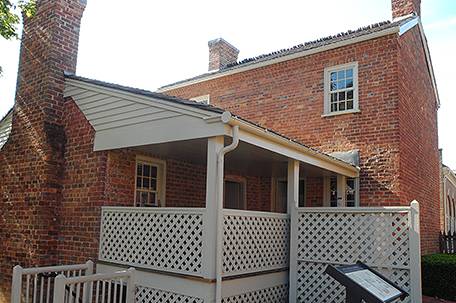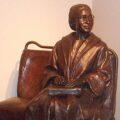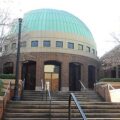
“Life is to be lived, not controlled; and humanity is won by continuing to play in face of certain defeat.”
–Invisible Man, Ralph Ellison
No state has had greater impact on the Civil Rights Movement in the rural Black Belt than Alabama. The Black Belt was so deemed, not because of its population, but because of the dark, rich soil that was extremely conducive to growing cotton. The area extends 25 miles wide and 300 miles long, from Tennessee, through Mississippi and Alabama and became a mecca for plantation agriculture in the early 19th century. Every city, town, village and community has a unique story to share and the region is so rich with history that a visit can take on the importance of a pilgrimage.
Logistically I found it best to establish a base in Birmingham, a mere 95 minute flight from Philadelphia, and embark on a series of daily explorations. No city mentioned is more than 100 miles from Birmingham and each is easily accessible from I-65. Depending upon your level of interest you can select sites in one or two cities and visit them in a single day.
Prior to becoming part of Alabama in 1819 Tuskegee was part of the Mississippi Territory. The original inhabitants were the Creek Indians and it is a Creek Chief, Taskigi, “warrior,” after whom the city was named. The city was laid out in 1833 but it is not until after the 1836 Creek removal that settlers began to infiltrate the area in large numbers.
Tuskegee University is one of the most famous historically black colleges and universities (HBCUs) in the nation. Lewis Adams, a black politician, was asked by a white ex-Confederate office seeker to provide the political backing of the black community in the 1880 election. Adams agreed but wanted his support in return for establishing a school. In 1881 the General Assembly of Alabama approved $2,000 to establishment of Tuskegee Institute, a normal and industrial school. On the recommendation of Hampton University, on of it’s former students and a professor, 26-year old Booker T. Washington, was asked to become the first principal.
Washington was born a slave in Virginia in 1856 to plantation cook Jane Ferguson and an unidentified white father. After emancipation he and his mother moved to West Virginia where she married a freedman, Washington Ferguson, and Booker went to work in a salt mine at the age of 9. In 1866 a white employer allowed him to attend school for one hour a day. Six years later he walked 500-miles to attend Hampton where he worked as a janitor to pay for his education prior to obtaining a scholarship. He graduated in 1875 and four years later he began teaching at Hampton.
When he arrived in Tuskegee he discovered that the funds were only to be used for salaries, not facilities. The only two buildings available to him were a church and a shack and so he began teaching in Zion Church on July 4, 1881 with 30 students. The following year he purchased 100 acres on which to establish a campus. The students erected the structures, from making the bricks to constructing the buildings. Washington directed the school until his death in 1915.
Booker T. Washington became an acknowledged leader of the African American community, arguably the spokesperson, after the death of Frederick Douglass. His beliefs were outlined in the “Atlanta Compromise” of 1895. In his speech he puts forth his stance that blacks should “accept disenfranchisement and social segregation” if whites do not impede their economic, educational and judicial progress. In 1901, Theodore Roosevelt made him the first black invited to the White House.
The National Park Service conducts guided tours of Tuskegee Institute National Historic Site. The campus has been designated a National Historic Site (NHS). The tours include visits to historic buildings and background information on the structures and individuals that made the institution great. www.nps.gov/tuin/index
Tours should begin with the famous bronze sculpture, “Lifting the Veil of Ignorance,” created in 1922 by Charles Keck. Located just beyond the 1903 Lincoln Memorial Gates, the statue depicts a standing Washington beside a crouching black man seated on a plow and anvil, holding an open book. Washington appears to have just lifted the veil and revealed to the newly freed slave the opportunity that lies before him. Notably, Ralph Ellison, a former Tuskegee student, mentions his feelings regarding the statue in “Invisible Man.”
Tuskegee’s first University Chapel, designed by Robert R. Taylor, the first African American graduate of MIT, was completed in 1898 using only student labor. More than 1-million bricks were used in its construction and highlights of the chapel were the interior electrical lights, the first in the county, and the stained-glass windows in the chancel. The stunning “Singing Windows” were designed by J & R Lamb of New York and depict 11 of the most significant and recognizable Negro Spirituals.
In 1957 the chapel burned down. A $3.3-million new church was designed by former faculty members with no right angles and was completed in 1969 on the footprint of the first chapel. Reproductions of the “Singing Windows” are now in the narthex. Many luminaries including presidents and M. L. King have spoken here.
The students built Washington’s home, The Oaks, in 1899. The home is open for tours and is furnished with family furniture, memorabilia and artifacts. The home, the first in the county with running water and electricity, has three porches, five bedrooms and three bathrooms.
In 1896, Washington selected George Washington Carver as the head of the Tuskegee Department of Agriculture. He served in that capacity for the next 47 years. Carver found hundreds of uses for peanuts and sweet potatoes and promoted the use of crop rotation and other scientific methods of improving the economic life for rural farmers. The Carver Museum on the campus is currently closed for renovations.
The University Cemetery is the final resting place of both Booker T. Washington and George Washington Carver. Washington’s family is interred near the shaded spot where he is interred.
The 1922 Shiloh Rosenwald School, the 1870 Shiloh Missionary Baptist Church and the Shiloh Cemetery are listed on the National Register of Historic Places based on their significance as locations connected with the “U.S. Public Health Service Study of Untreated Syphilis in the Negro Male in Macon County “ that lasted from 1932-72. All three sites are available for tours.
In 1932, men were recruited for a “health” project to study the treatment of what the men were told, was “bad blood.” In reality the government was studying the effects of syphilis and many of the 399 men in the study received no treatment at all, even after 1947 when penicillin had become the accepted cure. The government went so far as to ensure that the men were exempt from the armed forces because if they joined they would have been diagnosed and treated. In 1972 the Associated Press broke the story causing a public outcry and an end to the study.
Congressional hearings were held in 1972 and in 1974 a $10-million settlement was reached. Participants received lifetime medical benefits and burial services. President Bill Clinton issued a formal apology in 1997. More than 20 graves of victims of the stud are interred in Shiloh Baptist Church Cemetery.
Tuskegee Human and Civil Rights Multicultural Center interprets the history of the region’s tri-cultural struggle through interactive exhibit galleries. The exhibition spaces, The Shared Heritage Gallery, The Tuskegee Study and The Tuskegee/Macon County Civil Rights Gallery provide excellent historical background information. The center begins with the Native American story and continues with that of the Europeans and the African Americans. www.tuskegeecenter.org
Tuskegee Airmen National Historic Site is located at Moton Field on the original training site. In January of 1941 the US Army Air Corps formed an African American fighter pilot training program and Tuskegee was selected as the location and the trainees were housed in Tuskegee University.
A tour of the Tuskegee Airmen NHS begins on a hill overlooking the field. The view is the one a new recruit would have seen. A walking trail lined with interpretive plaques leads you down onto the field where hangar #1 functions as a museum and airplanes are on display. The site hosts special events including the annual Tuskegee Fly-In. There is no admission fee. www.nps.gov/tuai/index
You should allow a minimum of four hours to visit the sites in Tuskegee and follow in the footsteps of many who made history.
I wish you smooth travels in the New Year!
TUSKEGEE TRIVIA:
Did you know Rosa Parks and Lionel Richie were both born in Tuskegee?

















Leave a Comment